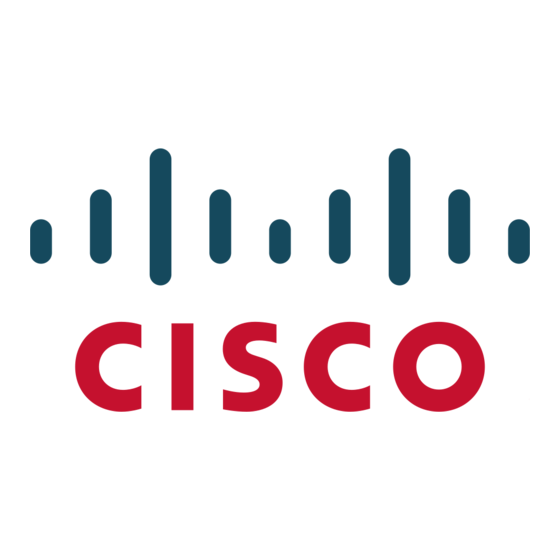Cisco 7513 Series Datasheet - Page 9
Browse online or download pdf Datasheet for Server Cisco 7513 Series. Cisco 7513 Series 11 pages. Chassis replacement
Also for Cisco 7513 Series: Quick Start Manual (44 pages), Replacement Instructions Manual (26 pages), Manual (30 pages), Maintaining (20 pages), Replacement Instructions Manual (19 pages), Replacement Instructions Manual (22 pages)

All contents are Copyright © 1992–2007 Cisco Systems, Inc. All rights reserved. This document is Cisco Public Information.
Feature
Description
Dynamic Host
DHCP Client, DHCP Proxy Client, DHCP Server-Easy IP Phase 2
Configuration Protocol
(DHCP)
IP routing
IP EIGRP route authentication, IP multicast load splitting across equal-cost paths, IP-named
access control list
IP-to-ATM QoS
IP Multicast
Cisco Express Forwarding
NAT
Network Address Translation
NTP
Network Time Protocol
RADIUS
Remote Authentication Dial-In User Service
SAA
Cisco Service Assurance Agent
SNMP
SNMP, SNMP version 3, SNMPv2C
TACACS
Terminal Access Controller Access Control System, TACACS SENDAUTH function, TACACS
single connection
System Availability Metrics
The Cisco 7500 Series offers full hardware redundancy at all system levels and is widely deployed
in industry segments that require a carrier-class, highly reliable, and high-availability platform.
Cisco monitors mean time between failure (MTBF) and mean time to repair (MTTR) data for Cisco
7500 Series hardware and software in large service provider networks. From customer results,
single Cisco ITP availability achieves "five nines" or 99.999 percent availability and, with an MTTR
of one-half hour, can achieve "six nines" or 99.9999 availability. Mated-pair Cisco ITP system
availability far exceeds "six nines" or 99.9999 percent availability.
Cisco Mobile Wireless Transport Manager
Cisco Mobile Wireless Transport Manager (MWTM) Release 6.0 provides monitoring and
management capabilities to the Cisco ITP solutions. Cisco MWTM addresses the element-
management requirements of mobile operators and provides fault, performance, configuration, and
troubleshooting capability as mobile operators make the transition from first-generation fixed,
leased-line networks to a converged IP-based infrastructure.
Data Sheet
Page 9 of 11
